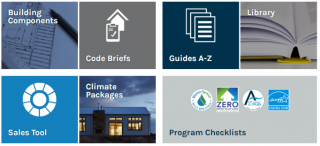Indoor AirPlus Technical Bulletins
EPA’s Indoor AirPlus program creates technical bulletins to share best practices involved with the construction of Indoor AirPlus labeled homes. The latest Indoor AirPlus technical bulletins can be found below.
See also the Indoor AirPlus Program Documents page for the latest Indoor AirPlus Construction Specifications and companion guidance.
Technical Bulletin: Activating a Passive Radon System (PDF)
(2 pp, 304 K, Feb. 2020, EPA 402/B-20/007)
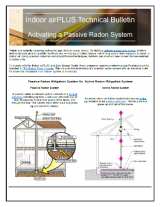
This technical bulletin details how Indoor AirPlus Partners address radon systems.
Radon is a naturally occurring radioactive gas that can cause cancer. By building radon-resistant new homes, builders and contractors provide a public health service — helping to reduce buyers’ risk of lung cancer from exposure to radon in indoor air. Using common materials and straightforward techniques, builders can construct new homes that are resistant to radon entry.
Technical Bulletin: Filtration(PDF)
(2 pp, 129 K, Nov. 2019, EPA 402/B-20/006)
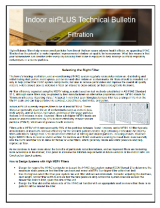
This technical bulletin details how Indoor AirPlus Partners address filtration.
High efficiency filters help remove small particles from the air that can cause adverse health effects, so upgrading HVAC filtration has the potential to make important improvements in indoor air quality for homeowners. What this means is that your homeowners can breathe better every day knowing their home is equipped to help manage a critical respiratory contaminant — airborne particles.
Technical Bulletin: Duct Protection During Construction(PDF)
(1 p, 130 K, July 2019, EPA 402/B-20/005)
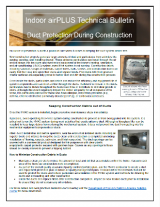
This technical bulletin details how Indoor AirPlus Partners address duct protection during construction.
New construction projects generate large amounts of dust and particulates from activities like sawing, sanding, and installing drywall. These airborne particulates can travel through the air and be drawn into the ducts and mechanical equipment of the home’s heating, ventilation, and air conditioning (HVAC) system, even if the system is not running. Construction debris including sawdust, scraps of materials, carpet fibers, nails, screws, and construction trash can easily find their way into open floor ducts and register boots. Flex ducts with their grooved interior surfaces are especially prone to harbor dust and dirt during the construction process.
Technical Bulletin: Pest Entry Prevention(PDF)
(2 pp, 160 K, June 2019, EPA 402/B-20/004)
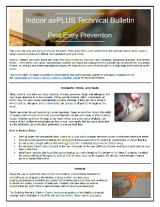
This technical bulletin details how Indoor AirPlus Partners address pests.
Insects, rodents, and other pests are more than just a nuisance; they can carry diseases, aggravate allergies, and spread germs. These pests can cause considerable property and structural damage if their activities go undetected for any length of time. Air sealing and water management measures required as a part of Indoor AirPlus help keep pests outside of the home.

